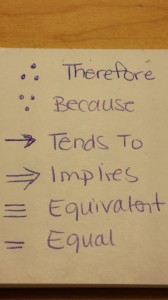I have several reasons for being wary of giving out grades in school. The effects of grades on the reason for students to learn and the type of learning they engage in is one of the reasons and was brought up by Kohn in his article, “The Case Against Grades.” Another reason that I’m not fond of giving out grades is because the current system of grading evaluates all students on the same scale and assumes that they are all capable of achieving the same success. Marks are given out of 100% but I question whose version of 100% that is. Not all students are able to achieve to the same level so I believe it would make more sense to grade students on how well they are learning compared to their individual potential. Of course, this opens a whole different can of worms about how to determine what a student’s potential is and the dangers of saying that some students have less potential than others.
I believe that the suggestion that Kohn gives is a solution to these issues. Rather than giving grades, give students qualitative feedback. I think this could be great for all subject areas. In many of the classes I have been in, which tend to be math classes, I have often heard the teachers talk about how students should reflect on their grades to determine their level of understanding. While grades may be an indication that students need to continue working on developing their understanding of the concepts, they are typically not very good at telling students exactly what it is they need to focus on. I think that giving qualitative feedback can help give students explicit feedback on specific areas they need to work on which has the potential to be more effective than having students attempt to interpret what their number or letter grade is trying to tell them. I think it is an interesting idea and would love to see if anyone has done research to test the effectiveness of this type of evaluation at the high school level.
